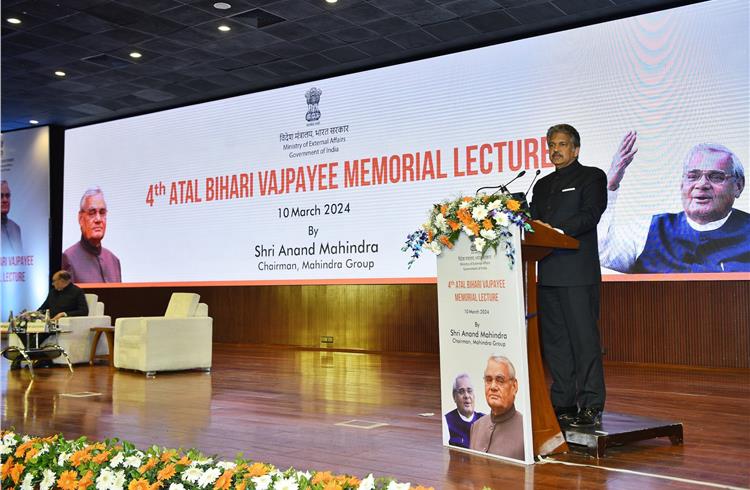Anand Mahindra, the chairman of the Mahindra Group, highlights India’s latent potential to emerge as a global powerhouse and stresses the importance of collaborative efforts between the government and businesses to unlock scale, foster innovation, and expand global market reach.
Speaking at the fourth annual Atal Bihari Vajpayee Memorial Lecture in Delhi on March 10, 2024, Mahindra advocated for government-private sector partnership in three key areas: scale, innovation, and global expansion.
The Indian government has been actively pursuing initiatives such as Make in India, Digital India, and production-linked incentive (PLI) schemes to propel the country towards becoming a developed nation by 2047. While acknowledging the effectiveness of the PLI scheme, Mahindra urged the government to extend its coverage to encompass broader sections of the industry.
Mahindra emphasized the need for government support in addressing the root causes affecting competitiveness, including high manufacturing costs attributed to land, utility, and logistic expenses. He highlighted the National Logistics Policy’s goal of reducing logistics costs to 8-10% of GDP to enhance global competitiveness.
Addressing concerns regarding India’s lower spending on research and development compared to countries like the US and China, Mahindra called for increased investment in research institutions to foster innovation.
Mahindra underscored the importance of promoting “Made in India” as a globally recognized brand through enhanced marketing efforts, participation in global trade shows, and effective pitching on international platforms.
To extend India’s global reach, Mahindra proposed leveraging business as an instrument of foreign policy and tying international aid to Indian industries. He also called for regulatory reforms to support startups and innovators.
Finally, Mahindra stressed the need for the Indian private sector to embrace lofty aspirations and exhibit strong self-belief, overcoming the mindset of risk aversion and post-colonial subservience disorder.



























































